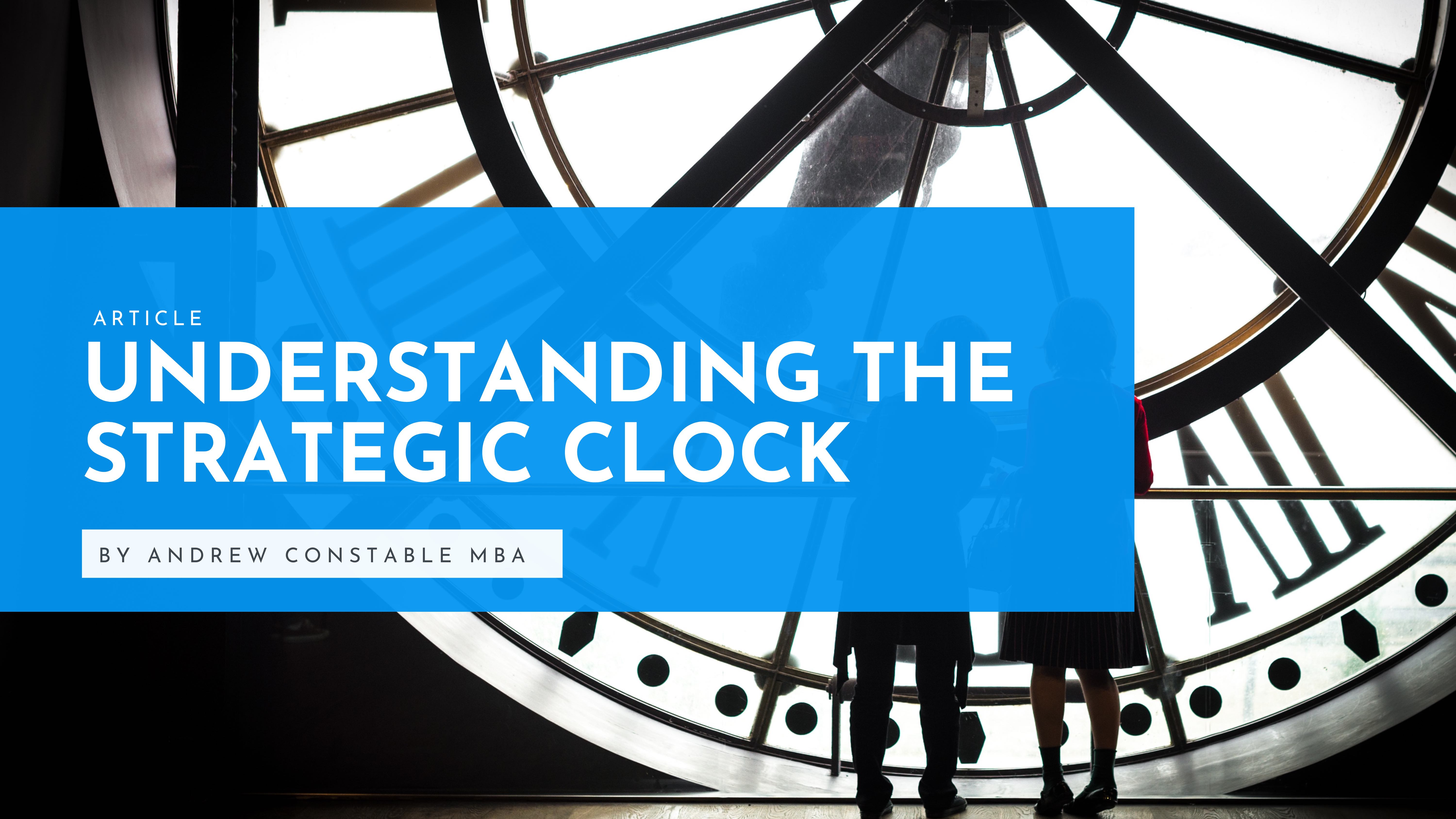Feb22

Companies continually seek frameworks and models in the dynamic business world to gain a competitive edge. One such model, the Strategic Clock, offers a compelling approach to understanding competitive positioning and strategic choice. Developed by Cliff Bowman and David Faulkner as an extension of Michael Porter’s Generic Strategies, the Strategic Clock provides a detailed perspective on how companies can position themselves in the marketplace to achieve sustainable competitive advantages. This article explores the essence of the Strategic Clock, its various positions, and how businesses can apply it to formulate impactful strategies.
The Strategic Clock is a strategic tool that categorizes a company’s strategy based on price and perceived value. Unlike Porter’s model, which outlines three generic strategies (Cost Leadership, Differentiation, and Focus), the Strategic Clock offers eight possible strategies represented in a circular model. These strategies range from low price/low value to focused differentiation, allowing a more nuanced competitive positioning analysis.
The first step in applying the Strategic Clock is to analyze your company’s current positioning. Assess your offerings in terms of price and perceived value by your customers. This analysis helps identify gaps between your current strategy and the optimal position on the clock.
Once you understand your current position, explore strategic options within the clock’s framework. For instance, if you’re positioned at low price/low value, consider whether moving towards a hybrid strategy could enhance your competitive edge by improving perceived value without significantly increasing price.
Market dynamics, including competitor actions, customer preferences, and technological advancements, are crucial in strategic positioning. Regularly review these factors to ensure your strategy remains relevant and competitive.
After selecting the most suitable strategic position, implement the necessary changes in your operations, marketing, and product development. It’s crucial to monitor the impact of these changes on your market position and adjust your strategy as needed.
The Strategic Clock offers a nuanced framework for understanding and implementing competitive strategies. By carefully analyzing their position on the clock and considering the dynamic nature of market forces, companies can develop strategies that provide a competitive edge and align with their long-term business objectives. Whether aiming for cost leadership, differentiation, or a hybrid approach, the Strategic Clock helps businesses navigate the complexities of strategic planning and execution.
Visualise Solutions helps medium-sized businesses innovate and make measurable progress towards their business outcomes so their companies thrive.
Elevate your business results with expert innovation and strategy, including advanced business model innovation, effective OKR, and balanced scorecard frameworks.
Learn more and contact us now.
By Andrew Constable MBA, XPP, BSMP
Keywords: Business Strategy, Innovation, Leadership
 Collective Resonance: How Consciousness Scales Beyond the Individual
Collective Resonance: How Consciousness Scales Beyond the Individual Autonomous Wingmen: Scaling Sustainable Aviation via NVIDIA NAT and Formation Flight
Autonomous Wingmen: Scaling Sustainable Aviation via NVIDIA NAT and Formation Flight The Board Chair as the Primary Lever of Psychological Safety
The Board Chair as the Primary Lever of Psychological Safety Friday’s Change Reflection Quote - Leadership of Change - Change Leaders Maintain Trust and Legitimacy
Friday’s Change Reflection Quote - Leadership of Change - Change Leaders Maintain Trust and Legitimacy The Corix Partners Friday Reading List - January 16, 2026
The Corix Partners Friday Reading List - January 16, 2026